Mexico’s floating gardens are an ancient wonder of drought mitigation
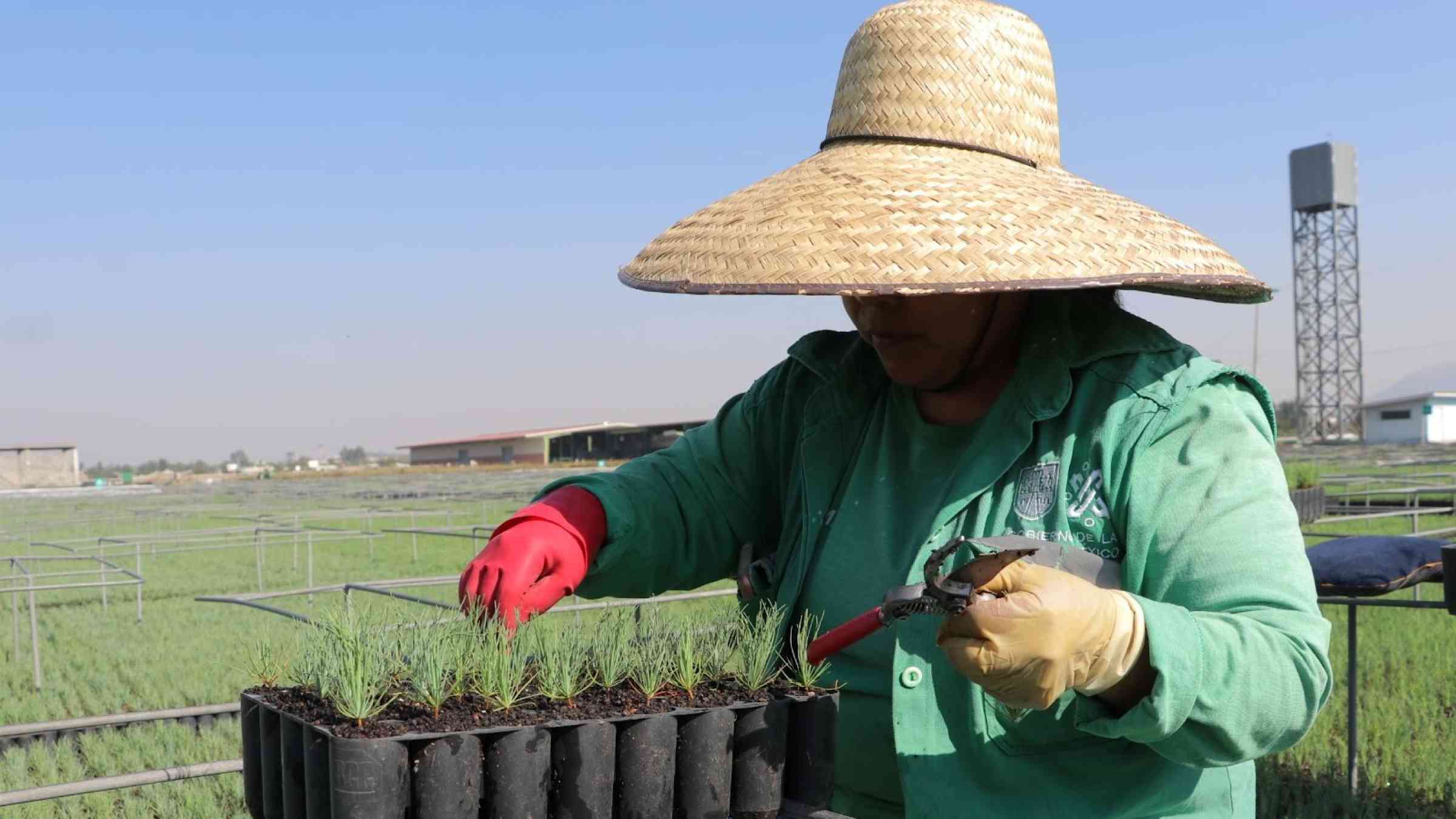
Standing amid rows of juicy, lime green lettuce and chunky florets of broccoli, Jose Paiz appears as if he could be the owner of a modern, high-tech farm. But the crops thriving here, in the suburbs of Mexico City, are part of a 1,000-year-old tradition.
"My ancestors were doing this before even the [Spanish] Conquistadors arrived in Mexico [in 1519]," says Paiz, while crouching down to pick up a handful of powdery soil from the chinampa, or "floating garden," on which we are both standing.
These highly productive man-made island-farms, which can be found floating on lakes across the south of Mexico's capital, date back to the time of the Aztecs or perhaps even earlier - and now proponents say that these ancient engineering wonders could provide an important, sustainable food source as the city faces historic drought.
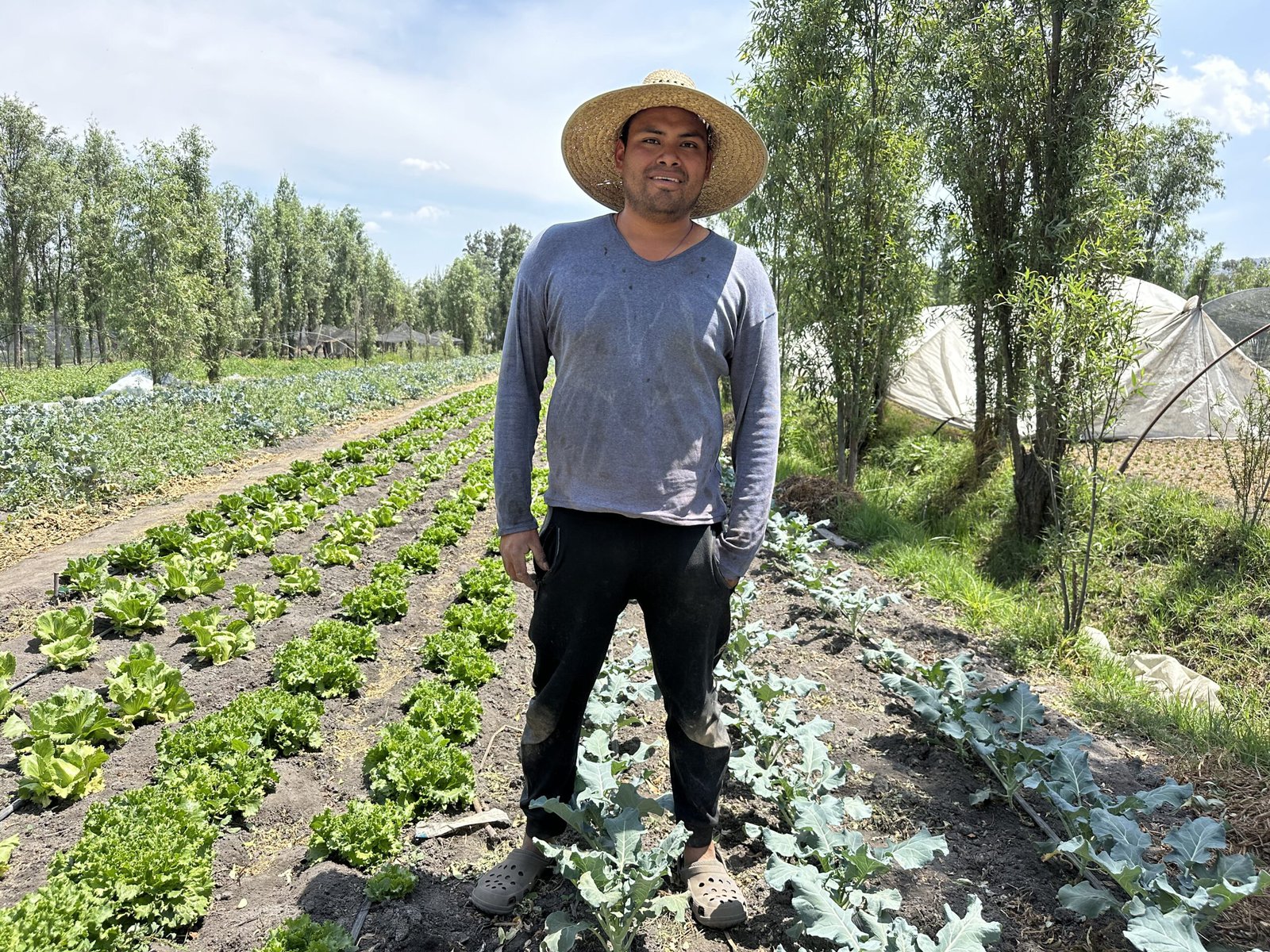
As a chinampero, Jose Paiz is carrying on a tradition that goes back centuries. Credit: Peter Yeung
"My grandparents taught me the methods," adds Paiz, 32, who is the fifth generation of his family to be a chinampero working in San Gregorio Atlapulco, a traditional working-class neighborhood about 10 miles south of the center of Mexico City.
Experts say that these chinampas, which have been recognized as a UNESCO World Heritage site, are considered one of the most productive agricultural systems in the world. The artificial islands are built by gathering large amounts of soil from the bottom of the lake and placing it on top of reeds, grasses and rushes in a mass that rises above the water. Farmers then plant a fence of ahuejotes, Mexican willow trees, around the plot to naturally protect against erosion. This system means that the chinampa's soil is constantly enriched by nutrient-filled sediment flowing in from the surrounding ditches and canals, yielding multiple harvests every year.
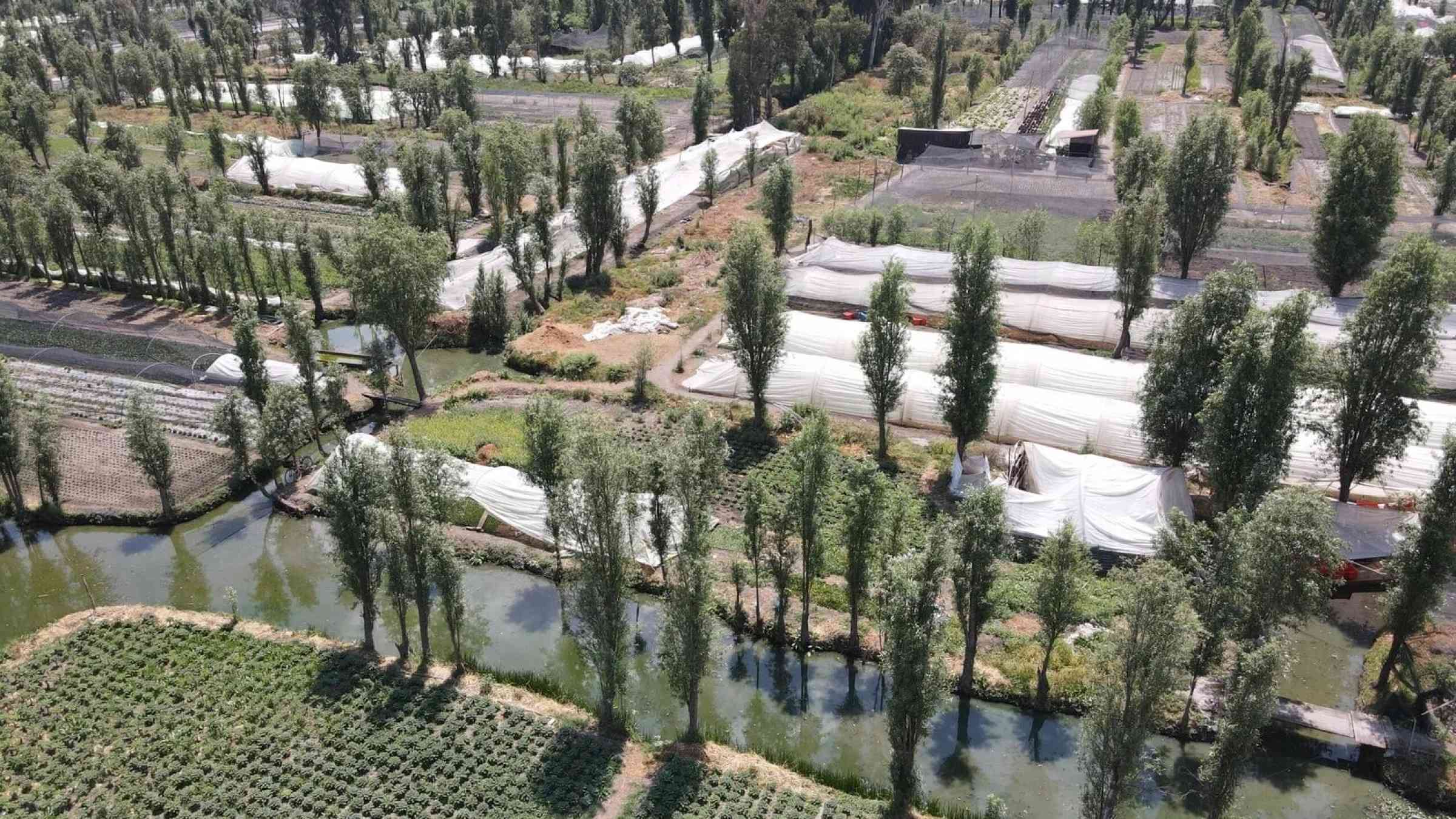
Ahuejotes, Mexican willow trees, are planted around the plots to protect against erosion. Credit: Peter Yeung
"In terms of agriculture, they are one of the best examples of how humans can work with nature," says Lucio Usobiaga, founder of Arca Tierra, an organization providing local farmers in the area with technical and entrepreneurial support.
One of the first traces of the chinampas dates back to the 14th century, when the Aztecs arrived at the region of what is now modern-day Mexico City. There, they founded the settlement of Tenochtitlán - which would become one of the most powerful cities in all Mesoamerica - in the Valley of Mexico.
But as the Aztecs soon discovered, the valley's boggy, lake-filled landscape was difficult to cultivate or build on. So they devised an ingenious plan to adapt to the surroundings: the chinampas.
A 2013 paper by North Carolina State University professor Matthew Teti found that in the 16th century, chinampa farms could produce 13 times as much crop as dry-land farming in the same area - a system that provided food for hundreds of thousands of people. Chinampas, the study said, are "one of the most intensive and productive agricultural systems ever devised."
Greens and other vegetables flourish on the chinampas, which are considered one of the most productive agricultural systems in the world.
"Aztec planners created these vital waterways as integral to the existence of its cultural, physical, and spiritual, urban identity, rather than draining the water and excluding it from the urban experience," it continued.
In the case of Jose Paiz, the age-old system is still reaping rewards today. He says that his 7,000 square meters of chinampa, for example, can produce as much as 100 kilograms of broccoli per day - which is sold alongside the yields of fresh herbs, spinach, chard, radishes, corn and kale at local markets in the south of Mexico City.
"I'm proud to be continuing the tradition of my ancestors," he says.
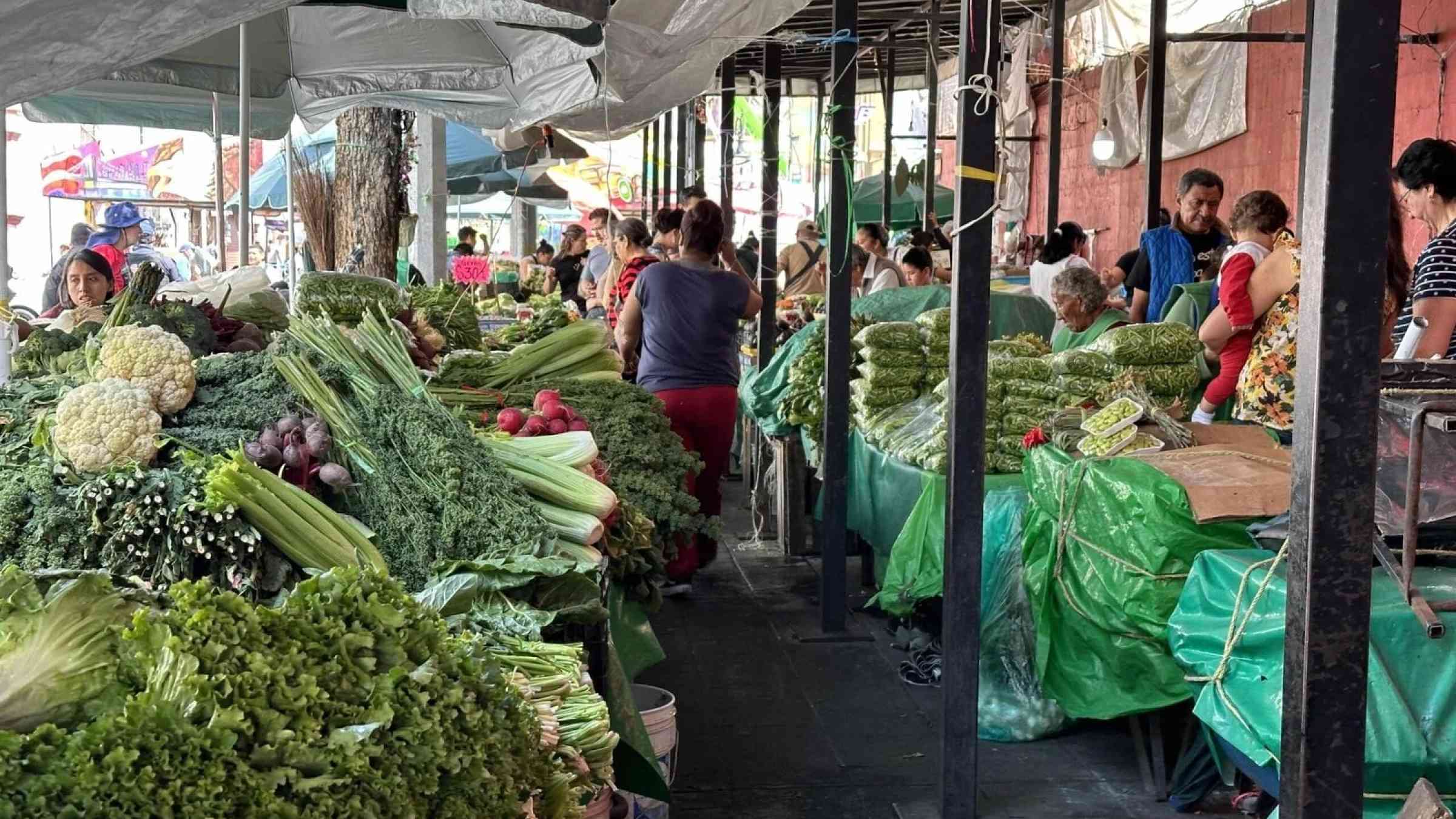
Produce grown on the chinampas is sold at bustling markets in the south of Mexico City. Credit: Peter Yeung
Meanwhile, according to Arca Tierra, their network of seven producers in the region cultivates over 40,000 square meters of land, employing a total of 27 workers in the field and producing 3,650 kilograms per month. At some farms, as many as 95 varieties of vegetables and herbs are cultivated, underlining the fertility of the method. The production brings in over $4,000 per month in crop sales.
"At the beginning, it was mainly a commercial endeavor to source organic produce close to the city," says Usobiaga, who supplies restaurants in Mexico City and began working with chinamperos in 2009. "But I learned they are very important in many regards and have historical and cultural importance."
The design of the chinampas is particularly efficient in its use of water, which it can absorb and retain from the surrounding canals for long periods as well as allowing crops to draw from the groundwater directly, reducing the need for active irrigation.
When it comes to farming, according to Lucio Usobiaga, founder of Arca Tierra, the chinampas "are one of the best examples of how humans can work with nature."
This could prove hugely valuable for Mexico City and its 22 million residents, since water supplies have fallen to historic lows due to abnormally low rainfall partly attributable to climate change. And lessons learned from the chinampas could potentially help cities around the planet: the UN World Water Development 2024 Report found the number of people lacking access to drinking water in cities will likely reach two billion by 2050.
"The technical aspects of agriculture are innate to every place," says Usobiaga. "But the way of thinking that created the chinampas, that sensibility, has to be appreciated and valued: To work with the flow of nature, the flow of the seasons. That is what we have to use to get us out of the problem we are in."

The endangered axolotl is only found in the waterways of southern Mexico City. Credit: Peter Yeung
The unique wetlands ecosystem is also home to two percent of the world's and 11 percent of Mexico's biodiversity, including the critically endangered axolotl, or Ambystoma mexicanum, an incredible salamander-like amphibian that is able to regenerate every part of its body - even parts of its vital organs such the heart and brain.
Meanwhile, the chinampas also provide a host of other benefits: they filter water, cool the city, sequester carbon, offer green space for locals, and are now a popular destination for tourists who take boats along the picturesque waterways.
The value of the chinampas was underlined during the Covid-19 pandemic, when, as the city's major markets ground to a halt, the chinampas were able to provide healthy, locally-grown food. In some cases, sales more than doubled.
"People began to search for healthier food," says David Monachon, a social sciences researcher at the National Autonomous University of Mexico who has researched the chinampas as a sustainable food source. "There was this focus on local economy and community. Many people didn't make this connection before."
Yet despite their immense value, the chinampas are under threat: rising urbanization means the chinampa landscape is being built on; pollution is dirtying the waters that feed them; younger generations are losing interest in agriculture; and agro-industry is under-cutting the small-scale producers in a price war.
For chinamperos like Jose Paiz, the age-old agricultural system is still reaping rewards today.
"There are a lot of challenges and problems," says Monachon, who is supporting a local cooperative of chinamperos to sell their goods via the Mercado Universitario Alternativo, or Alternative University Market. "But chinampas could feed the city."
Now, only 20 percent of the 2,200 hectares of chinampas are in use, and only about 2.5 percent are being actively cultivated for farming food - the rest is being used for growing flowers and tourism. But Arca Tierra is helping to restore the chinampas - five hectares to date - and is training 15 young students in the required skills to cultivate them - the second, six-month cohort - while also carrying out research on the most effective techniques and productive crops to use on them.
"We have demonstrated that it can be done on a small scale," says Usobiaga, who believes chinampas have the potential to produce enough of crops like lettuces, herbs and broccoli for all of Mexico City. "But the chinampas need support and investment from the government to scale up production."
At Xochimilco market, the largest in the area, there is clear evidence of appetite for a resilient, local food system and signs that this ancient Aztec tradition can still bear fruit. The market bustles with traders and customers, spilling from the covered area out onto the streets.
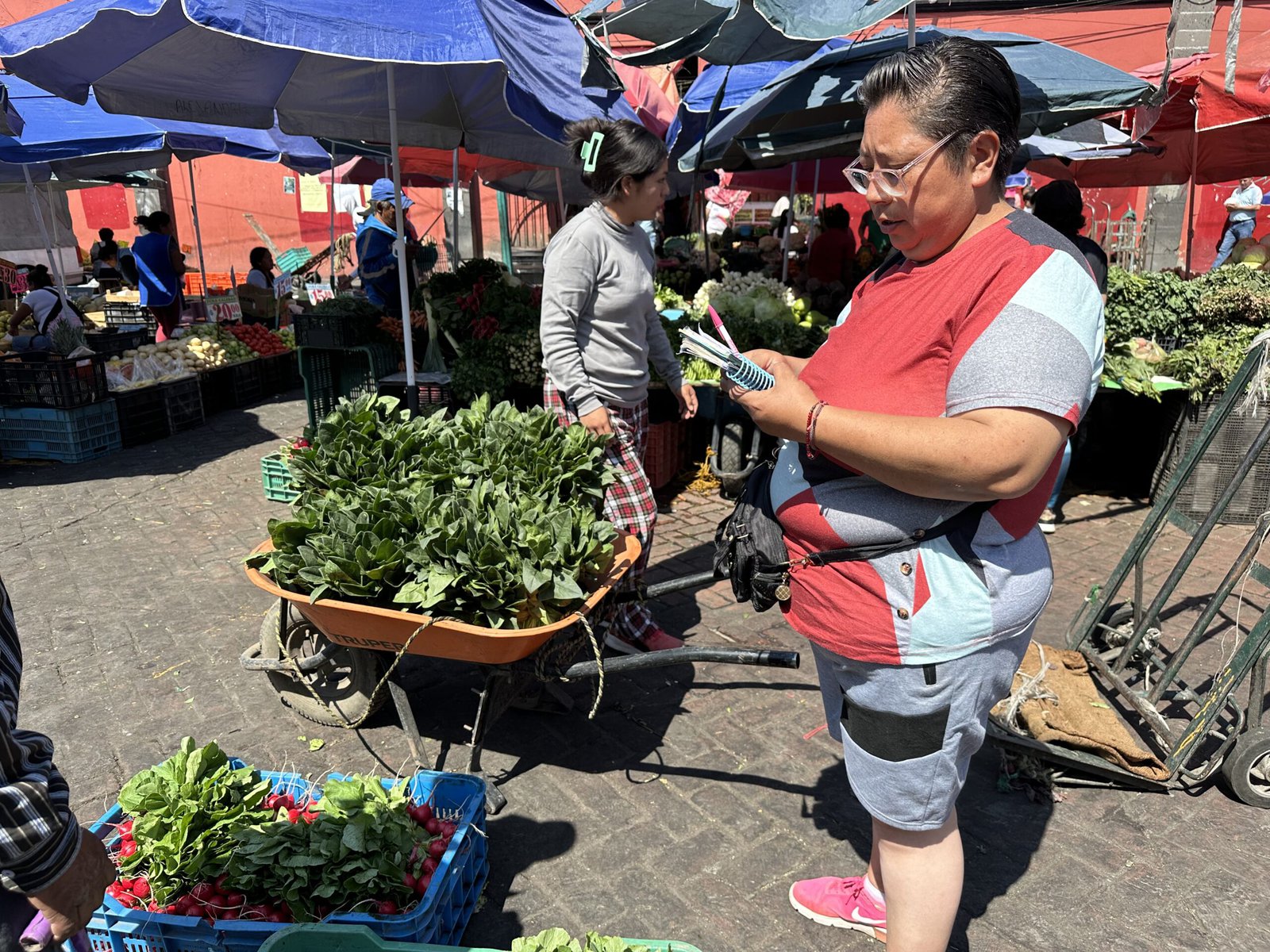
Rosa Garcia sells the produce that she grows on her family's one-hectare chinampa at Xochimilco market. Credit: Peter Yeung
Rosa Garcia, 47, is rushing around delivering lettuce, spinach, cilantro and broccoli to her 14 clients of the day. The produce, grown at her one-hectare chinampa at San Gregorio Atlapulco, is in high demand. Garcia says that each day her family-run farm can earn as much as 1,000 to 1,500 Mexican pesos ($60 to $90).
"I've been doing this since I was a girl," says Garcia, ticking off the orders as they are dispatched. "It's a system that works. Why do anything different?"
